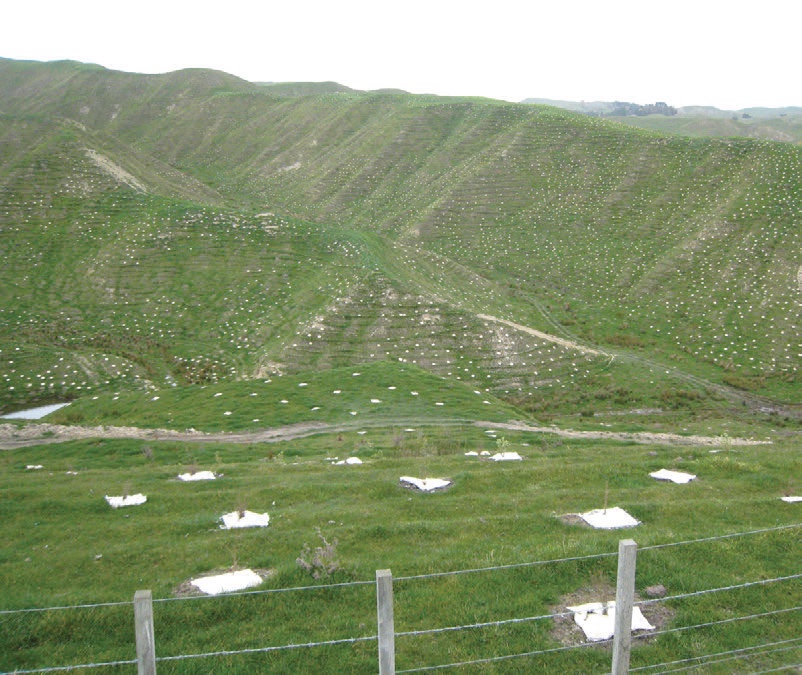Air New Zealand and the environment
Author not published, New Zealand Tree Grower November 2011.
Mangarara Station is a 610 hectare sheep and cattle farm in Elsthorpe, central Hawke’s Bay farmed by Greg and Rachel Hart. In 2008 they approached Air New Zealand about forming a partnership which would −
- Restore ecosystems by planting native trees and incorporating trees in the landscape for multiple benefits
- Work towards becoming a model of sustainable farming
- Offer non farming people a place to learn where and how their food is produced, and provide a place to visit where they will have the opportunity to reconnect with nature.
Six weeks after the initial meetings with senior Air New Zealand management and a farm visit by Rob Fyfe, the Air New Zealand Environment Trust was launched in Auckland. The restoration programme at Mangarara Station was the first project.
The partnership between Mangarara and the Air New Zealand Environment Trust has resulted in the establishment of a 20 hectare native conservation reserve on the station and has seen 91,000 trees planted in the past three years.
The trust was focused on planting native trees in the conservation reserve but with Greg and Rachel’s encouragement broadened the plan to the whole farm. The native conservation reserve has been planted on a dry erosion prone north west facing gully. The plantings are mainly pioneering species including mānuka, kānuka, flax, hebe, toitoi, karamu, cabbage tree, ribbonwood and pittosporums. Planting included a fertiliser pellet and a weed mat made of recycled paper and secured with biodegradable pins.
More planting
Additional farm plantings completed since 2008 include a 24 hectare block of radiata pine planted by Greg and Rachel, 2.5 hectares of redwoods and four hectares of different species
of eucalypts.The remainder of the trees across the farm have been planted in the paddocks, with a tubex tree guard to protect them from sheep, or planted down fence lines, again with a tubex protector and an electric wire to keep cattle away.
Advice on suitable species was given by respected Hawke’s Bay tree gurus Chris Ryan and Alec Olsen. Hawkes Bay Regional Council staff also helped in the planning. The various species were chosen for their hardiness, nutrient fixing ability, stock fodder value, shade, shelter and aesthetics.The final plantings included seven varieties of alder, ash, plane trees, oaks, elm, hornbeam, beech, poplars and willow.
During the course of the project the Greg and Rachel have had a good relationship with Air New Zealand and have enjoyed hosting staff and business partners from the airline. This relationship has seen an additional 2,000 native trees planted on behalf of staff and customers around the lake on the farm, continuing the initiative to protect and enhance this waterway.
Open to the public
Mangarara is a working sheep and cattle station and the introduction of so many young trees has meant some management changes. This is especially important during the establishment of the open paddock grown trees, reducing the number of paddocks which can be grazed by cattle.
The biggest management adjustment they face will be late this year when Mangarara Station opens to the public as part of the agreement with the trust. Greg and Rachel are confident that this will be a positive initiative. They see the value in bringing people back on to the land to experience nature, learn where their food comes from and to see first hand the changes brought about.


 Farm Forestry New Zealand
Farm Forestry New Zealand